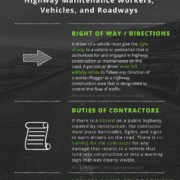Bicycle Laws
This article discusses bicycle laws in the state of Utah.
National Laws
National bicycle laws vary from state to state. In Utah, there is no statewide requirement for minors or adults to wear a helmet. However, some counties and cities require the wearing of a bicycle helmet, regardless of the state law. There are many laws that pertain to the riding of bicycles in certain areas or locations. If they are riding on a public street, cyclists are required to obey the rules of the road just like any other motor vehicle; they are required to indicate when turning, stop at red lights, etc.
Cyclists on the road are considered the same as a motor vehicle, and therefore have to obey all road related laws.
Helmet Laws
Helmet laws in the United States for bicycles vary from state to state. The age can also vary for the requirement of wearing a helmet. For example, there is no statewide requirement for bicyclists to wear a helmet in Texas, minor or adult. However, some states such as Houston and Fort Worth require all bicyclists under the age of 18 to wear a helmet.
Local laws
There are local laws in some counties or cities that are not present in the state law. For example, in Washington County in Utah, there is no requirement for cyclists to ride on the street, instead of the sidewalk. There used to be a clear-cut law in Washington County, “it shall be unlawful for any person to ride any bicycle upon any sidewalk within the city, except sidewalks that may be designated for bicycle riding by the city council”. However, this law has been removed for the time being; this indicates that cyclists may now ride on sidewalks that do not indicate the allowance or denial or riding. In other words, cyclists can ride on sidewalks, simply because there is no law that prevents them from doing so. Because this law has been removed recently, some citizens may not know about it and get irritated if they are walking on the sidewalk and a cyclist is riding on the same sidewalk. If someone doesn’t know the current laws, they may become frustrated with certain situations.
Safety
As with all laws, the intent of road laws pertaining to motorists and cyclists is to keep the roads safe. Cyclists are to obey all traffic laws as if they were driving a motor vehicle. Cyclists, just like motorists, will be given a ticket for violating road laws. Cyclists are encouraged to ride single file but are permitted to ride side by side, but no more than two side by side.
The requirement for cyclists riding at night is that the cyclist must have a white light that can be seen from 500 feet away and a rear red reflector. Also, wearing light colors, even reflective colors at night is highly encouraged.
Common Problems
There is a common problem that presents itself when a bicyclist who is not wearing a helmet is hit by a car and has a head injury. If the county, city or state requires all persons to wear a helmet while riding a bicycle, this person could lose their chance at compensation due to their negligence of the helmet law. This bicyclist still may be able to receive some compensation for the accident, but because they were negligent in connection with the accident, it will be very difficult for them to receive such compensation. One way this can be done is by proving that the head injury would have occurred even with the helmet, but that task is very difficult to prove.
When it comes to liability, the person who caused the crash is at fault and most likely has to pay for the damages. If both parties are at fault, it can get complicated; such as a cyclist not wearing a helmet when they are supposed to, and a car crashes into them.
With the recent removal of the bicycle sidewalk law in Washington County, problems can occur when citizens are unaware of recent laws. This can cause problems on the road or even cause accidents.
Because cyclists are much smaller than cars, motorists sometimes don’t see cyclists.
Bicycle Crashes
There is good news and bad news about bicycle crashes. The bad news is that 45% of bicycle crashes happen in or near an intersection. The good news is around 59% of bicycle crashes involve on the bicycle and the bicycle rider. There are still collisions with cyclists and cars, though; 11% of bicycle crashes involve a cyclist and a car.


Bicycle Laws
McMullin Injury Law












